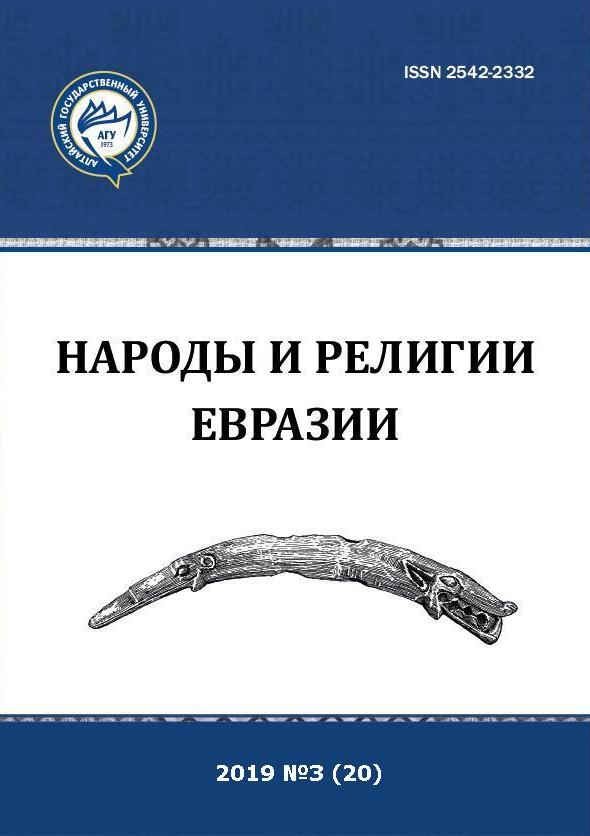Naiman phase of the history of the state Hsi Liao (Western Liao)
Main Article Content
Abstract
One of the least studied in the actual respect and most tendentiously comprehended in the history of the Western Kidan state Hsi Liao (Western Liao, 1128–1218) is final period, when the Naiman Khan Kuchluk, who fled from Genghis Khan from Mongolia, came to power in it. Chitans and Naimans were the two main forces that played a strategic role in the history of the Western Empire. Finally we can distinguish two periods in the history of this state: 1) Chitan’s — by Yeh-lui Dashi to Yeh-lui Zhilugu, 2) Naiman — by Kuchluk. Medieval historians have shared a common history Hsi Liao on two diametrically opposed periods: legal — Dashi-Zhilugu, illegal — Kuchluk. Meanwhile, they are two regular stages in the history of the Hsi Liao. Kuchluk, undoubtedly, was a talented statesman, because under him the state “increased”, i. e. revived and became more consolidated, i. e. the leading role in it was played not by the Chitans, and to some extent by the Naymans, but only by the Naymans, who became the main and almost the only force. They also represented a serious military force. Kuchluk was dangerous for the Mongols and ideologically, for gathered around him all the “discontented”, united them politically, i. e. In the state, proved the possibility of the development of this state as an Empire.
Downloads
Metrics
Article Details

This work is licensed under a Creative Commons Attribution 4.0 International License.
References
Абрамзон С. М. Очерк культуры киргизского народа. Фрунзе, 1946. 124 с.
Абульгази. Родословное древо тюрков / пер. Г. Саблукова // Известия общества археологии, истории и этнографии при Казанском университете. 1906. Т. XXI, вып. 5–6. 224 с.
Ан-Нисави, Шихаб ад-Дин Мухаммад. Жизнеописание султана Джалал ад-Дина Манкбурны / пер. с араб. З. М. Буниятов. Баку, 1973. 449 с.
Григорьев В. В. История монголов. От древнейших времен до Тамерлана : пер. с перс. СПб., 1834. 171 с.
Гумилев Л. Н. Поиски вымышленного царства. Легенда о «государстве пресвитера Иоанна». М., 1997. 480 с.
Д’Оссон К. История монголов. От Чингиз-хана до Тамерлана. Т. 1. Чингиз-хан / пер. с фр. Н. Козьмина. Иркутск, 1937. 295 с.
Караев О. К. История Караханидского каганата. Фрунзе, 1983. 301 с.
Кучлук // Советская историческая энциклопедия. М., 1965. Т. 8. С. 213.
Материалы по истории киргизов и Киргизии. М., 1973. Вып. 1. 280 с.
Пиков Г. Г. Западные кидани. Новосибирск, 1989. 196 с.
Плано Карпини Джиованни. История монгалов. Рубрук Гильом. Путешествие в Восточные страны. М., 1957. 291 с.
Рашид ад-Дин. Сб. летописей. М. ; Л., 1946. Т. I, ч. 2. 188 с.
Ру Ж.-П. Чингисхан и империя монголов. М., 2005. 144 с.
Храпачевский Р. П. Военная держава Чингисхана. М., 2005. 557 с.
Чингисхан. История завоевателя мира, записанная Ала-ад-Дином Ата-Меликом Джувейни / пер. с англ. Е. Е. Харитоновой. М., 2004. 688 с.
Bretshneider E. V. Mediaeval researches from Eastern Asiatic Sources: fragments towards the knowledge of the geography and history of central and western Asia from the 13th to the 17th century. L., 1888. V. I. 334 p.





